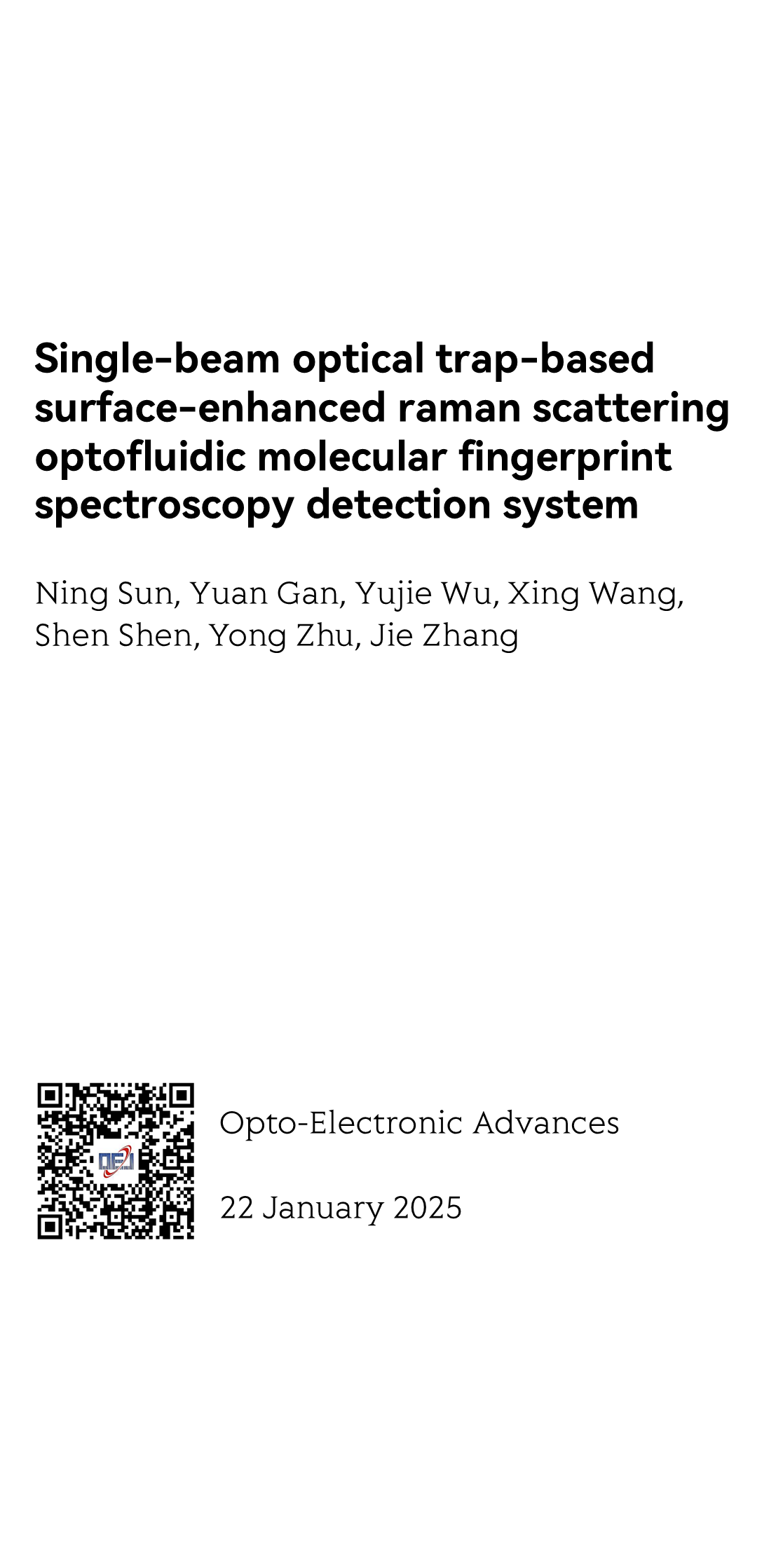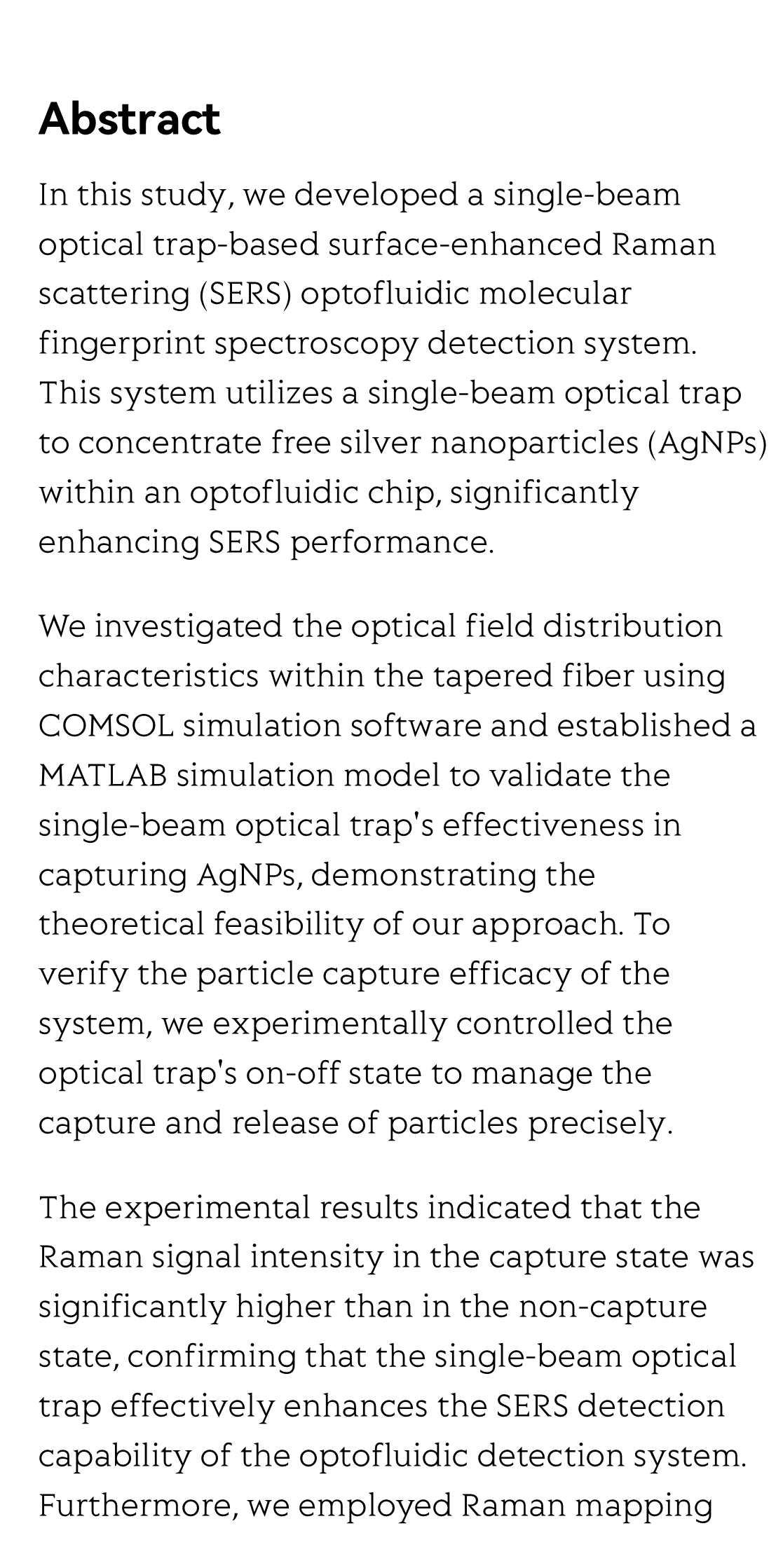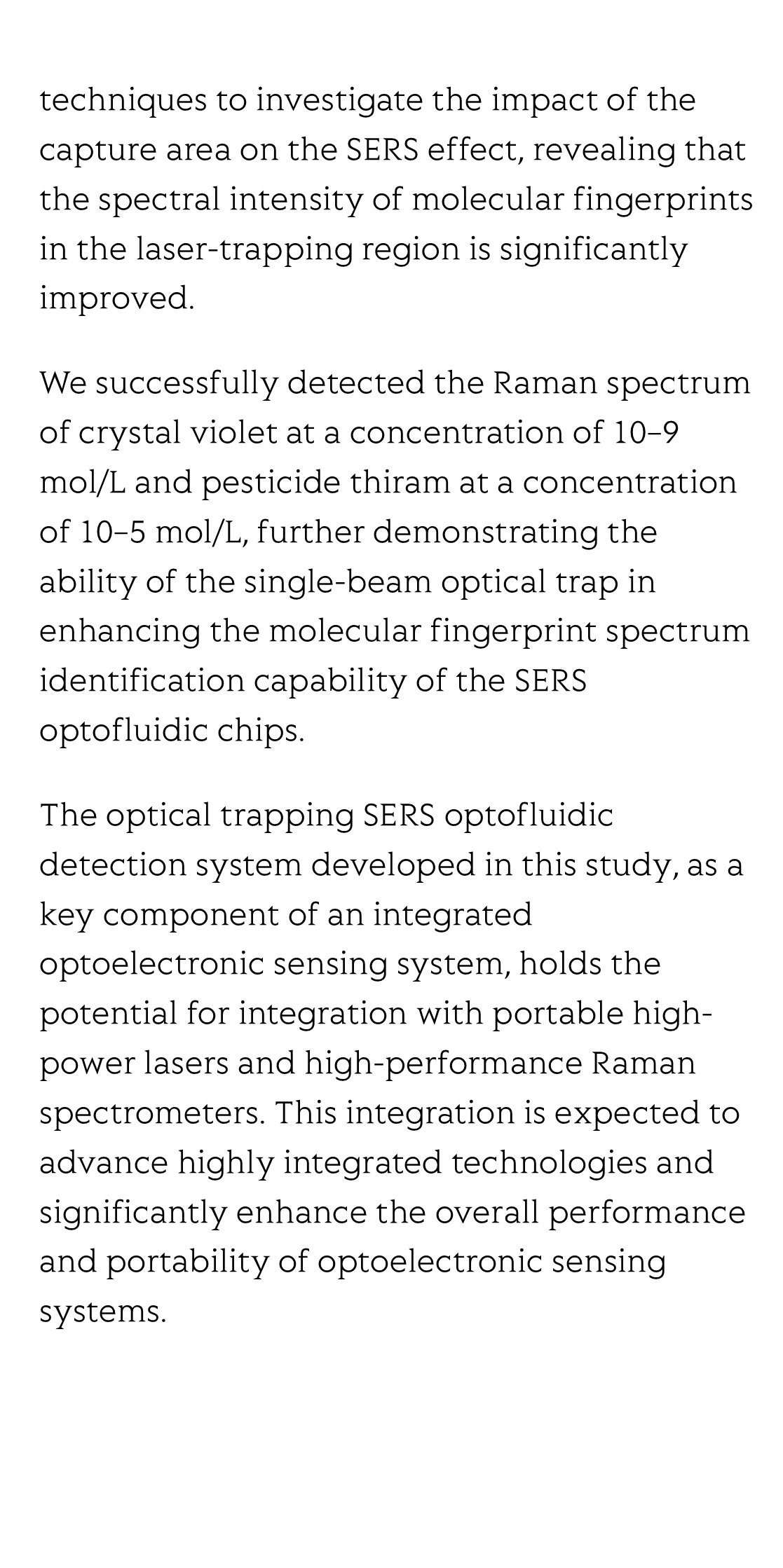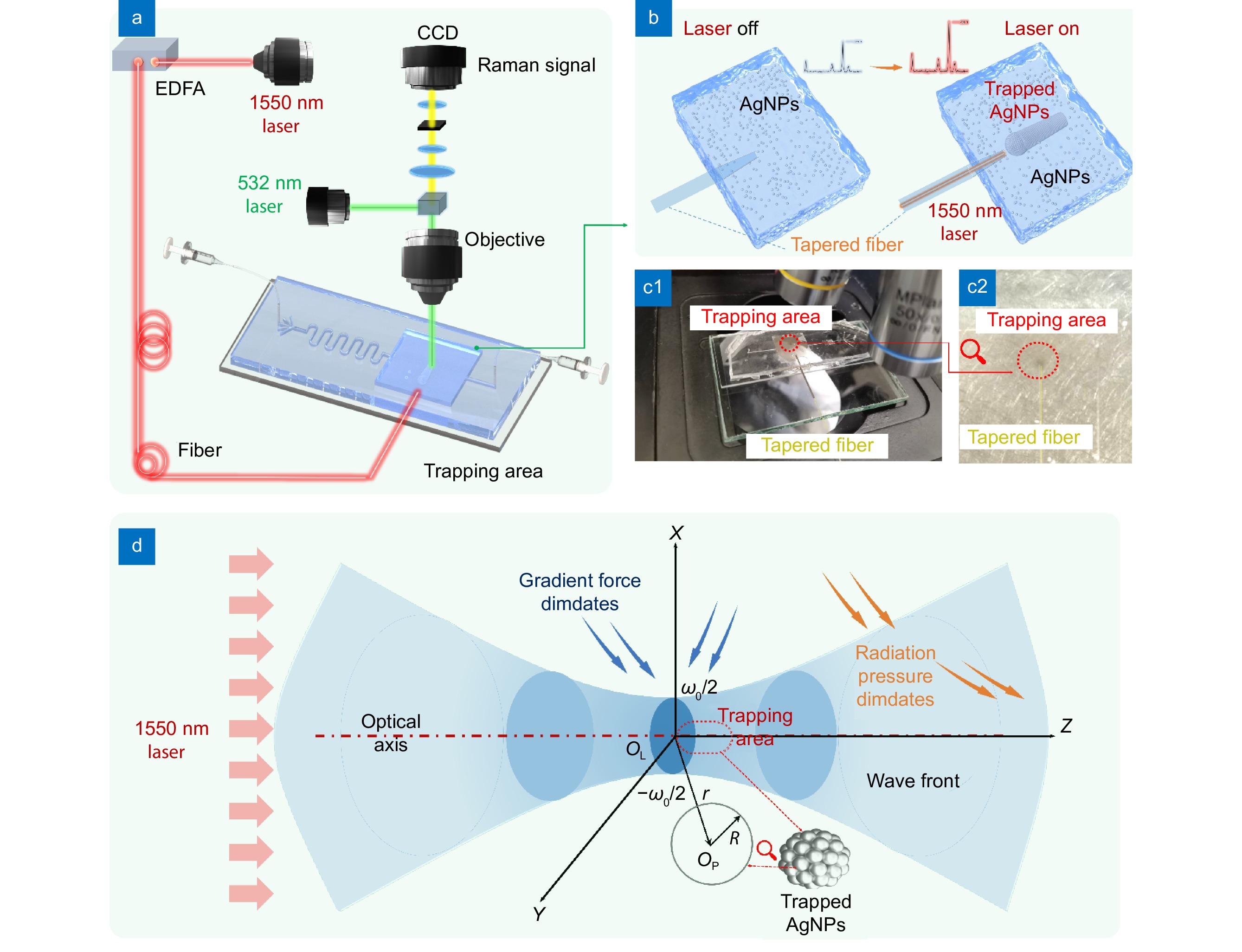(Peer-Reviewed) Single-beam optical trap-based surface-enhanced raman scattering optofluidic molecular fingerprint spectroscopy detection system
Ning Sun 孙宁, Yuan Gan 甘愿, Yujie Wu 吴予杰, Xing Wang 王幸, Shen Shen 申珅, Yong Zhu 朱永, Jie Zhang 张洁
The Key Laboratory of Optoelectronic Technology & System, Education Ministry of China, Chongqing University, Chongqing 400044, China
中国 重庆 重庆大学光电技术及系统教育部重点实验室
Opto-Electronic Advances
, 2025-01-22
Abstract
In this study, we developed a single-beam optical trap-based surface-enhanced Raman scattering (SERS) optofluidic molecular fingerprint spectroscopy detection system. This system utilizes a single-beam optical trap to concentrate free silver nanoparticles (AgNPs) within an optofluidic chip, significantly enhancing SERS performance.
We investigated the optical field distribution characteristics within the tapered fiber using COMSOL simulation software and established a MATLAB simulation model to validate the single-beam optical trap's effectiveness in capturing AgNPs, demonstrating the theoretical feasibility of our approach. To verify the particle capture efficacy of the system, we experimentally controlled the optical trap's on-off state to manage the capture and release of particles precisely.
The experimental results indicated that the Raman signal intensity in the capture state was significantly higher than in the non-capture state, confirming that the single-beam optical trap effectively enhances the SERS detection capability of the optofluidic detection system. Furthermore, we employed Raman mapping techniques to investigate the impact of the capture area on the SERS effect, revealing that the spectral intensity of molecular fingerprints in the laser-trapping region is significantly improved.
We successfully detected the Raman spectrum of crystal violet at a concentration of 10−9 mol/L and pesticide thiram at a concentration of 10−5 mol/L, further demonstrating the ability of the single-beam optical trap in enhancing the molecular fingerprint spectrum identification capability of the SERS optofluidic chips.
The optical trapping SERS optofluidic detection system developed in this study, as a key component of an integrated optoelectronic sensing system, holds the potential for integration with portable high-power lasers and high-performance Raman spectrometers. This integration is expected to advance highly integrated technologies and significantly enhance the overall performance and portability of optoelectronic sensing systems.
Review for wireless communication technology based on digital encoding metasurfaces
Haojie Zhan, Manna Gu, Ying Tian, Huizhen Feng, Mingmin Zhu, Haomiao Zhou, Yongxing Jin, Ying Tang, Chenxia Li, Bo Fang, Zhi Hong, Xufeng Jing, Le Wang
Opto-Electronic Advances
2025-07-17
Multiphoton intravital microscopy in small animals of long-term mitochondrial dynamics based on super‐resolution radial fluctuations
Saeed Bohlooli Darian, Jeongmin Oh, Bjorn Paulson, Minju Cho, Globinna Kim, Eunyoung Tak, Inki Kim, Chan-Gi Pack, Jung-Man Namgoong, In-Jeoung Baek, Jun Ki Kim
Opto-Electronic Advances
2025-07-17
Non-volatile tunable multispectral compatible infrared camouflage based on the infrared radiation characteristics of Rosaceae plants
Xin Li, Xinye Liao, Junxiang Zeng, Zao Yi, Xin He, Jiagui Wu, Huan Chen, Zhaojian Zhang, Yang Yu, Zhengfu Zhang, Sha Huang, Junbo Yang
Opto-Electronic Advances
2025-07-09
CW laser damage of ceramics induced by air filament
Chuan Guo, Kai Li, Zelin Liu, Yuyang Chen, Junyang Xu, Zhou Li, Wenda Cui, Changqing Song, Cong Wang, Xianshi Jia, Ji'an Duan, Kai Han
Opto-Electronic Advances
2025-06-27
Operando monitoring of state of health for lithium battery via fiber optic ultrasound imaging system
Chen Geng, Wang Anqi, Zhang Yi, Zhang Fujun, Xu Dongchen, Liu Yueqi, Zhang Zhi, Yan Zhijun, Li Zhen, Li Hao, Sun Qizhen
Opto-Electronic Science
2025-06-25
Observation of polaronic state assisted sub-bandgap saturable absorption
Li Zhou, Yiduo Wang, Jianlong Kang, Xin Li, Quan Long, Xianming Zhong, Zhihui Chen, Chuanjia Tong, Keqiang Chen, Zi-Lan Deng, Zhengwei Zhang, Chuan-Cun Shu, Yongbo Yuan, Xiang Ni, Si Xiao, Xiangping Li, Yingwei Wang, Jun He
Opto-Electronic Advances
2025-06-19







